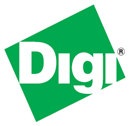 Device Cloud Smart Energy ConnectPort X2e and ERT Documentation
Device Cloud Smart Energy ConnectPort X2e and ERT Documentation
The Digi ConnectPort X2e for Smart Energy is a gateway on a Smart Energy network that provides secure access to a ZigBee Smart Energy network over the internet. The gateway is set up to take advantage of connection management services offered by Device Cloud, and to intelligently handle SE events in order to reduce the need for communication and micro management by utility applications.
There are three Smart Energy certified software applications for the gateway on the ZigBee network:
| Name | Smart Energy Device Type | Node Type |
|---|---|---|
| ESI Coordinator | Energy Service Interface (ESI) | Coordinator / Trust Center |
| ESI Router | Energy Service Interface (ESI) | Router |
| IPD Router | In-Premise Display (IPD) | Router |
All of the configurations use the same core Python SE_Framework codebase and share much of the same functionality. The difference between the node types are as follows:
- Coordinator - Forms the Smart Energy network and acts as the trust center. All devices joining the network must be authenticated with the trust center.
- Router - Joins the Smart Energy network through the trust center.
The Smart Energy device type determines whether Smart Energy clusters supported by the gateway are servers or clients. The ESI is defined by Smart Energy to support the server side clusters. These clusters create and cancel Smart Energy events; for example, publishing the price of commodities like electricity on the network. The Energy Service Interface supports the following clusters:
- Time server - Synchronizes real time clock for all of the devices on the ZigBee network.
- Demand Response/Load Control (DRLC) server - Manages DRLC events which can change temperature set points on thermostats, water heaters, and spas or turn off devices in the home to prevent brownouts during high peak energy situations.
- Price server - Manages pricing events that set the price of different commodities using a start time and duration in one minute intervals. For example, increasing the price of electricity during peak hours in the evening and decreasing price during low demand times at night. Pricing can be set in real time to respond to demand or ahead of time to allow customers to plan energy usage.
- Messaging server - Sends messages to a customer through ZigBee network. Messages can require confirmation from the customer.
- Metering client - Reads the metering usage data from meters on the network.
The client side clusters receive the events and act on them; for example, a thermostat may receive a published price event for electricity and change the heating setpoint to save money. The gateway makes these events available on the internet for other devices to act on or for reporting purposes. The In-Premise Display Smart Energy device type supports the following clusters:
- Time client - Synchronizes real time clock with the time server on the ZigBee network.
- Demand Response / Load Control (DRLC) client - Receives DRLC events from the server and reports them through Device Cloud. The gateway handles canceled and overlapping events and provides updates when the currently active list of events changes.
- Price client - Receives price events for all available commodities from the price servers. The gateway also tracks when the prices of commodities change and provides updates through Device Cloud.
- Messaging client - Receives messages from the server and reports them through Device Cloud. The gateway allows users to confirm messages, handles canceled messages, and provides updates when the currently active message changes.
- Metering client - Reads the metering usage data from meters on the network.
See Network Diagram. You can convert your ConnectPort X2e for Smart Energy between these certified applications. See ConnectPort X2e for Smart Energy Conversions for more details.
Devices on a Smart Energy network will vary widely between installations. Procedures in the User’s Manual frequently specify generic tasks. See Add Devices to the ZigBee SE Network for any Digi devices you are joining to your Smart Energy network. For 3rd party Smart Energy devices, please see the documentation which came with your product for details on how to apply these procedures. A sample is provided that uses a serially-attached XBee to simulate various Smart Energy devices and is useful for evaluation and development. When a procedure in this manual calls for a second device other than the gateway this sample can be used. (See In-Premise Display/Meter Simulation Sample)
The user is also expected to have a means of sending RPC requests and receiving RPC responses from the gateway to access the Smart Energy Framework’s API. In an actual installation this functionality would be provided by the utility application. In order to evaluate the gateway and for use during development a web application is provided to communicate with the gateway. When a procedure in this manual calls for sending an RPC request to your gateway this sample can be used. (See Digi-SE Debug Console)
Perform the Getting Started procedures below to setup a ConnectPort X2e for Smart Energy and begin interacting with other Smart Energy devices on an actual network.
Overview describes some of the general concepts used in the ConnectPort X2e for Smart Energy.
ConnectPort X2e for Smart Energy, ESI Coordinator Details lists detailed endpoint, cluster, and attribute information for the ESI Coordinator variant.
ConnectPort X2e for Smart Energy, IPD Router Details lists detailed endpoint, cluster, and attribute information for the IPD Router variant.